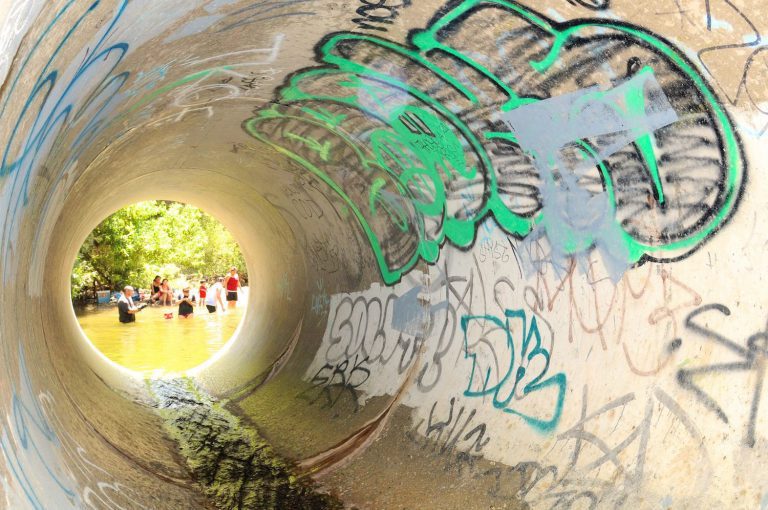
For graffiti artists, creating artwork in canyons and on trees is a trending and rewarding phenomenon, but the California State Parks Department calls it a crime that’s costing thousands of dollars in manpower to clean up in a department already struggling to maintain its Malibu facilities.
Locals and hikers familiar with Malibu’s majestic parks say graffiti in local parks has tripled over the last three years, and park rangers are the ones being tasked with the cleanup. Cleanup and coverup methods include painting over it, sandblasting or using an axe to cut out painted parts.
“I spent hours with an axe cutting out graffiti from a deadfall that is habitat to several ecosystems,” said State Parks Officer Jed Reghanti. “I even paid for paint out of my own pocket to get rid of graffiti so it wouldn’t be 10 times worse the following week.”
The problem has gotten so bad in the La Jolla Canyon area that State Parks is looking to bring in an outside agency for cleanup. Initial estimates have come in at $28,000.
But Gabriel Schoenberg, a graffiti writer who leads tours through the company Graff Tours, is on a much different mission.
He offers graffiti walking tours to teach the technical aspect of the craft and to tell the story behind it.
“I have given hundreds of graffiti tours to people from around the world,” said Schoenberg. “Graffiti first and foremost is about getting ‘ups.’”
Schoenberg said an “up” refers to an artist completing their work in a public space. Artists also like to go a few steps further by looking for hard-to-access places, Schoenberg said. Getting art in a tough spot gives artists an adrenaline rush, he said.
After completing their work, many take to social media accounts and post photos.
“It is an addiction,” he said.
On a recent tour led by Reghanti, The Malibu Times explored the economical and environmental hazards being created by graffiti artists.
A tour of Malibu Creek State Park showed trees, rocks and canyons laden with paint. Areas and trails near the now-closed Rindge Dam and bridge at Malibu Lagoon have also been a big problem.
State Parks officials and local law enforcement said that social media-inspired graffiti invites cycles of crime into a community.
“Many people who do this have portfolios of their work,” said Reghanti. “They don’t see what they are doing as a crime.”
Stephen Bylin, Topanga Sector Superintendent for State Parks, said he sees the same problem with graffiti in the Santa Monica Mountains that not only affects trees, canyons and trails, but protected fossils. He has seen graffiti on fossils along trails in Saddle Peak above Malibu, which is a huge paleontology concern. The historic Murphy Ranch area, referred to today as “the ruins” has been vandalized with graffiti on old structures, steps and trails on any given day.
“I have noticed the problem is much more significant now than it was back in the 1990s,” said Bylin. “Back then it was tied to more gang activity, now it is tied to social media and its cultural art form.”
Schoenberg agreed that most graffiti today is done by writers and artists, not gang members.“Gang tagging has a distinctive style which consists of skinny lines, numbers and letters,” said Schoenberg.
Once a new piece appears in wildlife, though, the State is faced with a problem that seems to have no evident solution, except trying to clean up on a case-by-case basis.
To add more of a headache, taggers and artists rarely get caught.
“We don’t get caught because we do a lot of planning and practicing before we go out on a mission,” said Schoenberg. “We have lookouts and more than one person is involved.”
Graffiti can be classified as a misdemeanor or felony and result in high fines and jail time, according to Sgt. John Skikas from the Malibu/Lost Hills Sheriff ’s Station Department.
“If the damage is $400 or more we will present the case to the District Attorney’s office as a felony vandalism case,” said Skikas.
Ultimately, though, paying to remedy or remove illegal artwork falls on taxpayers.
“Graffiti, even if it is seen as an art form, should not become an expense of the public,” Sap said.


